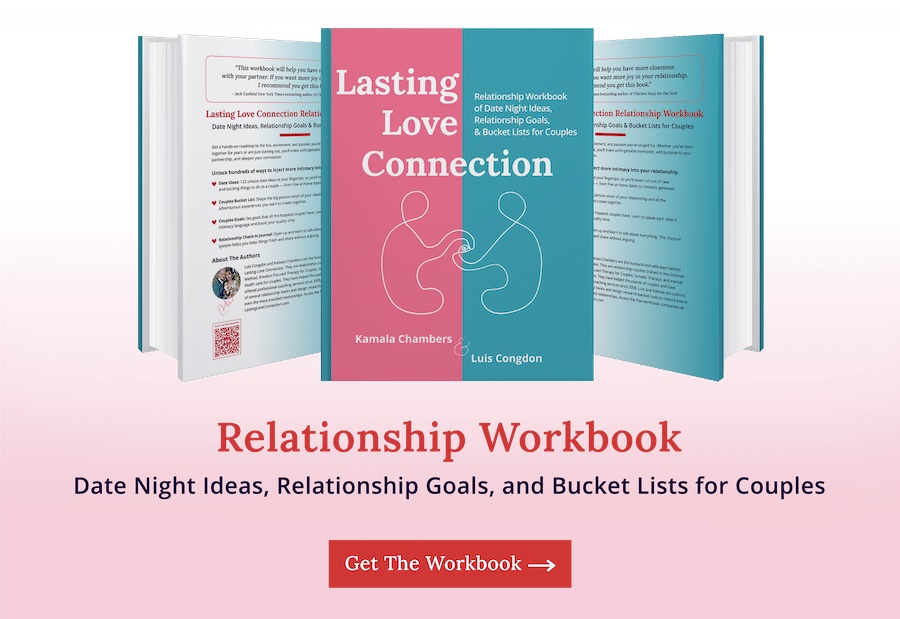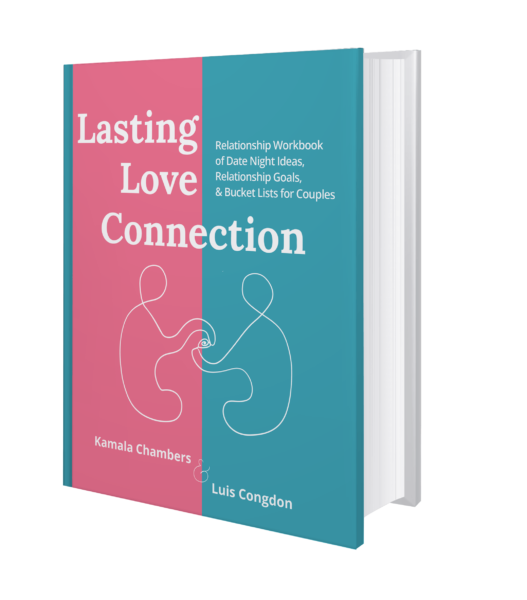Are you wondering how you can strengthen the level of intimacy in your relationship?
It’s common for couples in long-term relationships to fall into a routine and become disconnected from each other over time.
However, breaking out of this rut and feeling closer again is possible.
This article will discuss the different types of intimacy and the five levels of intimacy you progress through in a relationship.
Also, you’ll get practical strategies for increasing intimacy and deepening your relationship.
Table of Contents
What is intimacy?

Intimacy is crucial in keeping you and your partner feeling close and connected.
In an intimate relationship, you feel heard and understood.
You trust you can reveal your deepest self to your partner without being judged or criticized.
Intimacy is an important element of a loving, healthy relationship.
If your relationship lacks intimacy, you may feel disconnected or distant from your partner.
What are the types of intimacy in romantic relationships?
Many individuals tend to associate the word “intimacy” with sexual intimacy.
However, sex is not the only way to establish a deep connection with your partner.
You and your partner can explore different types of intimacy to develop a closer relationship.
Emotional intimacy

Emotional intimacy is a key element of a healthy relationship.
It involves sharing your thoughts, feelings, and experiences with your partner without fearing judgment.
In emotionally intimate relationships, you feel safe talking about anything.
For instance, you can voice concerns about the relationship or your greatest fear for the future.
Building emotional intimacy requires emotional safety, trust, and vulnerability.
Get the Intimacy Game to explore the levels of intimacy in your relationship.
Physical intimacy

Physical intimacy involves sharing physical closeness and affection with your partner.
It can take many forms, such as holding hands, kissing, or hugging.
Physical touch feels good and helps you feel closer to your partner thanks to an amazing hormone called oxytocin.
Oxytocin is released during cuddling, hugging, or sexual arousal and orgasm.
Research has shown that oxytocin is calming and creates strong relational bonds.
Sexual intimacy
Sexual intimacy encompasses both sexual interactions and open communication about your sexual desires, needs, and fantasies.
It’s crucial that you and your partner have open and honest conversations about your sexual preferences.
If you have any unexpressed expectations regarding sex, it can cause tension and frustration in your relationship.
Spiritual intimacy
Spiritual intimacy refers to sharing beliefs, values, and a common sense of purpose in life.
It may manifest in various ways, such as participating in religious ceremonies, practicing meditation, or spending time in nature.
Spiritual intimacy allows you to understand each other better and connect with something greater than yourselves.
Intellectual intimacy

Intellectual or mental intimacy happens when you share your thoughts and opinions about a subject.
For instance, you and your partner might discuss a podcast episode you both listened to or debate a political issue.
An essential element of intellectual intimacy is respect for each other’s perspectives, even if you disagree on certain aspects.
Social intimacy
Social intimacy refers to shared experiences and the feeling of experiencing life together.
You can cultivate social intimacy through simple activities such as cooking dinner, going on walks, or watching TV shows.
Without social intimacy, you and your partner may live under the same roof but lead separate lives.
Exploring the five levels of intimacy
Intimacy psychologists have identified five levels of intimacy that individuals experience as they become closer to another person.
These intimacy levels apply to romantic and other social and personal relationships.
Level of intimacy #1: Safe communication

This level of intimacy pertains to exchanging facts and information.
Safe communication at this level would involve small talk with a cashier at a grocery store or with an acquaintance at a party.
No personal vulnerability is involved; therefore, no risk of rejection.
People who communicate on this level share minimal intimacy.
While it is a perfectly healthy and safe way to connect, it doesn’t fulfill your longing to be seen and known.
Level of intimacy #2: Other people’s opinions and beliefs
At Level 2, you open up and become slightly more vulnerable by expressing other people’s opinions and beliefs.
For example, you might share something you heard on a podcast with a coworker.
Such statements test the waters and gauge the other person’s reaction without revealing your own opinions.
If you feel threatened by criticism or rejection, you can still distance yourself from what you shared because it’s not your own thoughts.
Related Reading: Feeling Rejected By Your Wife?
Level of intimacy #3: Personal opinions and beliefs

At this intimacy level, you move from sharing the opinions of others to expressing your own thoughts and beliefs.
With slightly more personal vulnerability involved, people communicating at this level risk conflict, judgment, and rejection.
However, it’s still possible to adapt if you begin feeling judged or criticized.
If the other person’s reaction is negative, you can say that your personal opinions and beliefs have changed.
Level of intimacy #4: Feelings and experiences
The next level of intimacy involves sharing your feelings and experiences.
At this level, you become more vulnerable by sharing your past or current experiences, struggles, successes, and hopes for the future.
For example, you might reveal a mental health challenge you had in high school or college.
As these details are revealed, there is less room to backtrack because feelings and experiences cannot be changed.
However, if the other person has a strong emotional reaction and you feel threatened, you can tell them you have changed since those past experiences.
Level of intimacy #5: Needs, emotions, and desires

At the highest level of intimacy, you open up and share your needs, emotions, and desires with another person.
For instance, you might tell your partner, “I felt hurt when you didn’t share your big news with me.”
On the needs, emotions, and desires level, we share not only our hurts but also our joys, hopes, and dreams for the future.
To get to this intimate place, you must trust the other person enough to reveal your deepest self without fear of judgment or rejection.
Once you reveal your deepest core self, there is no going back.
Even if you begin feeling too vulnerable, you can no longer convince your partner that you don’t think or feel a certain way.
Also, sharing on the needs, emotions, and desires level involves letting another person see your emotional reaction in the moment.
For many people, communicating at this level triggers their greatest fear of abandonment.
When you are vulnerable, it can feel like you risk losing the person you love.
However, while avoiding vulnerability is safer, you block yourself from the deep, fulfilling connection you crave.
Increase the level of intimacy in your relationship
If you haven’t reached the highest level of intimacy with your partner, these simple strategies can help you get there.
Increase your level of intimacy #1: Spend time together
Building intimacy is an important element of any relationship.
However, with work, parenting, and household chores, it’s easy to get lost in the daily grind and forget to connect with your partner.
To start increasing intimacy, schedule a weekly date night to spend quality time with your partner.
Date nights don’t have to be extravagant or expensive.
Time together can be as simple as taking a walk or grabbing coffee.
By dedicating time to focus on each other without distractions, you show your partner that you value your connection and fuel passion.
For 100+ unique date night ideas, pick up the Relationship Workbook.

Increase your level of intimacy #2: Explore shared interests
Consider how you can engage in shared interests to improve intimacy in your relationship.
For instance, embark on a creative project together, learn a new language, do volunteer work, or join a board game club.
By sharing experiences, you’ll build trust and emotional intimacy and always have something to talk about.
Increase your level of intimacy #3: Ask meaningful questions

If you want to deepen your connection with your partner, ask more specific questions, inviting them to share more of their inner world.
Rather than surface-level questions like “How was your day?”, try asking something like “What’s on your mind this week?” to encourage more meaningful conversation.
By asking better questions, you and your partner move beyond discussing daily happenings and delve into sharing past or current experiences, emotions, fears, and hopes.
Increase your level of intimacy #4: Start a daily connection ritual
True intimacy develops in the small moments of day-to-day life.
You don’t need to dedicate hours of time and energy to connect with your partner.
Daily connection rituals can be as simple as hugging before parting ways in the morning, eating dinner together, or cuddling before bed.
When you have a consistent connection ritual, you know that no matter what happens during the day, you’ll have that time to reconnect.
Increase your level of intimacy #5: Try couples coaching
If you and your partner struggle with intimacy, seek professional support.
There may be several barriers that could be affecting your intimacy, such as frequent conflicts or lack of emotional safety and trust.
A relationship coach will help you identify these unhelpful patterns and develop healthier ways of relating with each other.
With the support of a relationship coach, you’ll gain skills for building and maintaining the deep connection you long for.
Book a complimentary couples consultation to learn more about working with us.
What does true intimacy look like?

True intimacy develops over time; it does not happen overnight. True intimacy requires honest communication, emotional safety, vulnerability, and trust.
What is a false sense of intimacy?

A false sense of intimacy forms through overreliance on technology or physical intimacy without emotional closeness. It is the illusion of intimacy without the substance of authentic connection.
What does lack of intimacy look like?

Lack of intimacy in a relationship can result in emotional distance, limited communication, reduced affection, and an unsatisfying sex life. You or your partner may feel unseen or unheard.
What is the highest level of intimacy in a relationship?

The highest level of intimacy involves sharing our needs, emotions, and desires. We express not only our hurts but also our hopes and joys. This intimacy level requires mutual respect and deep trust.







0 Comments